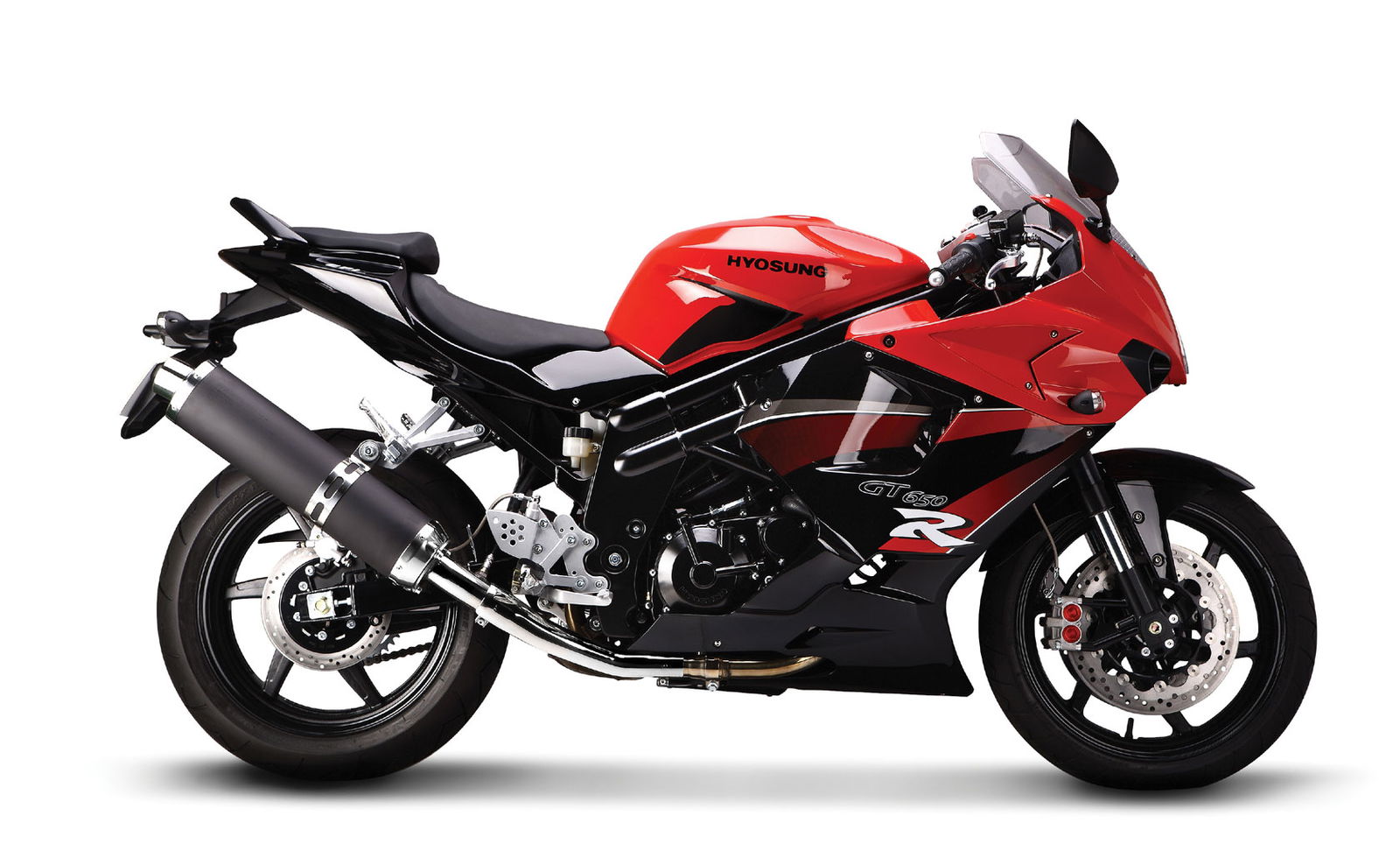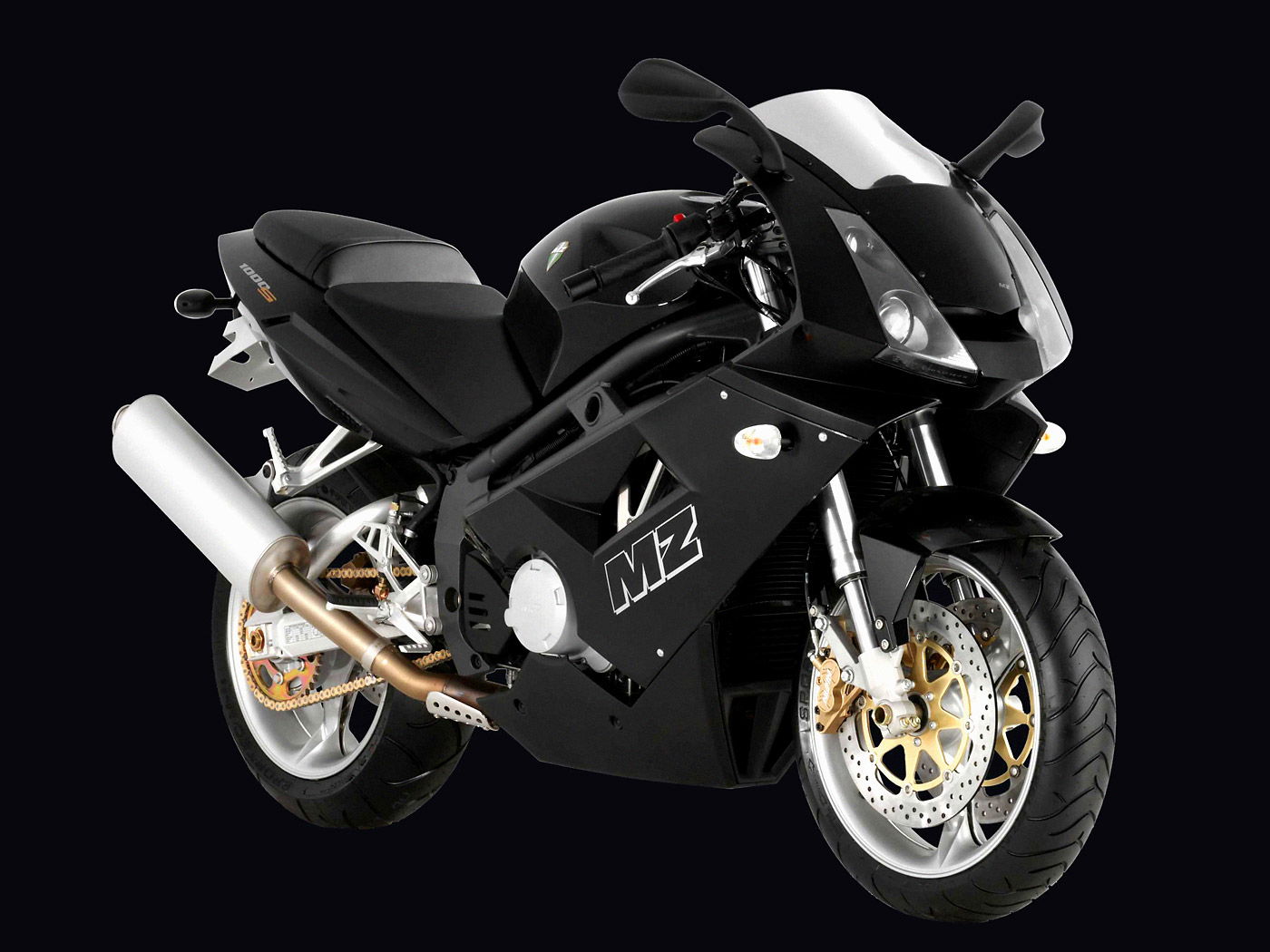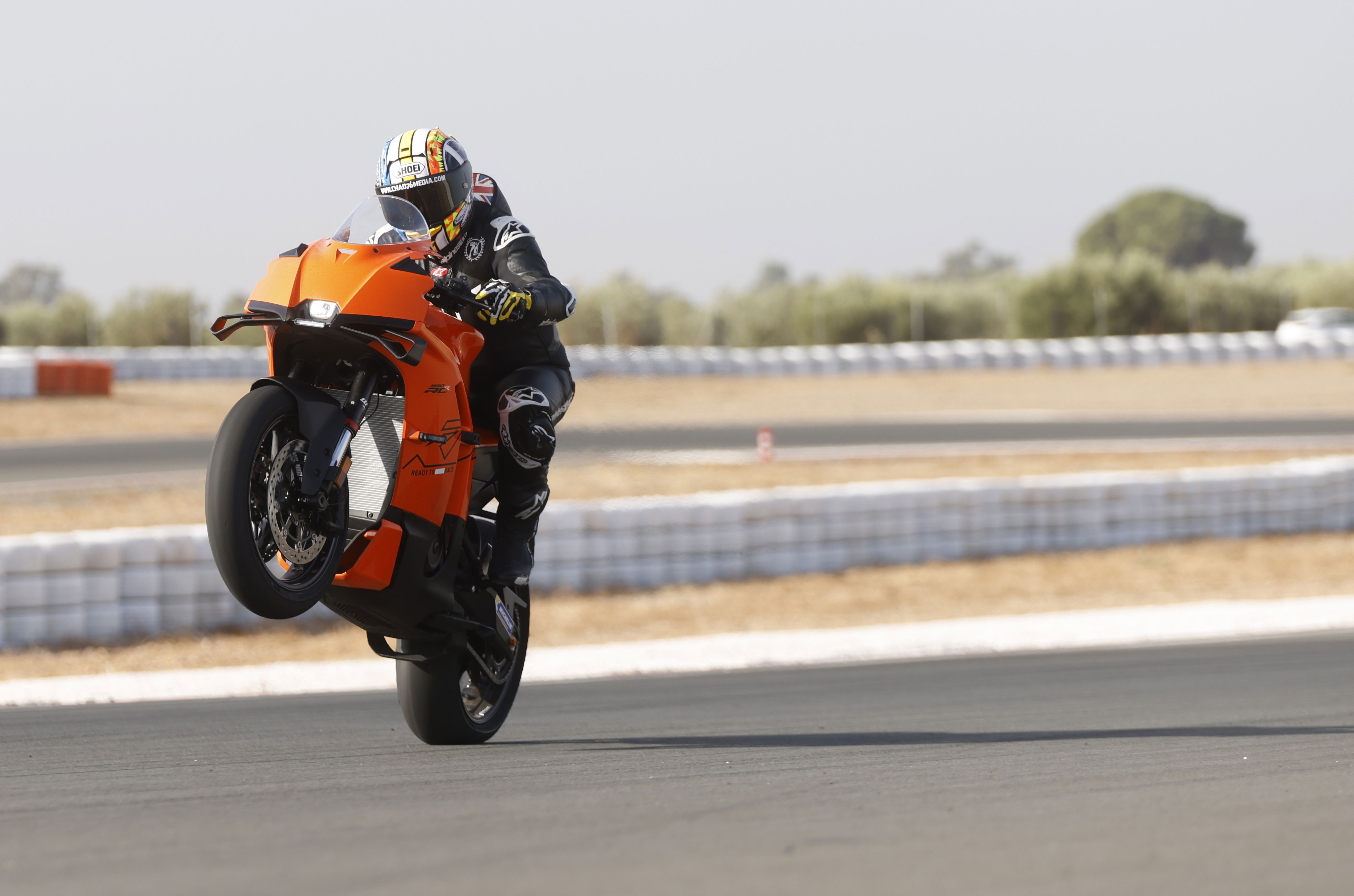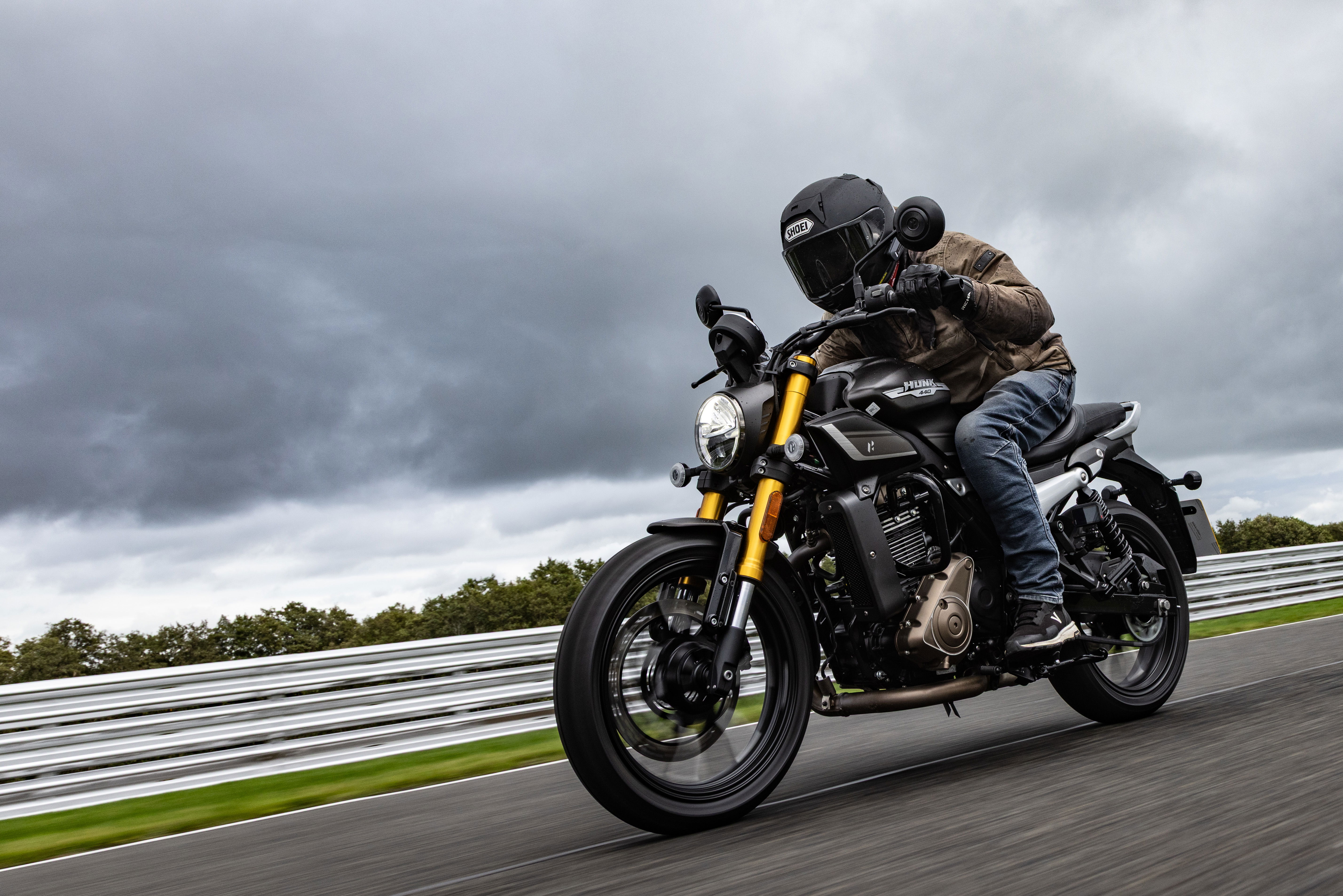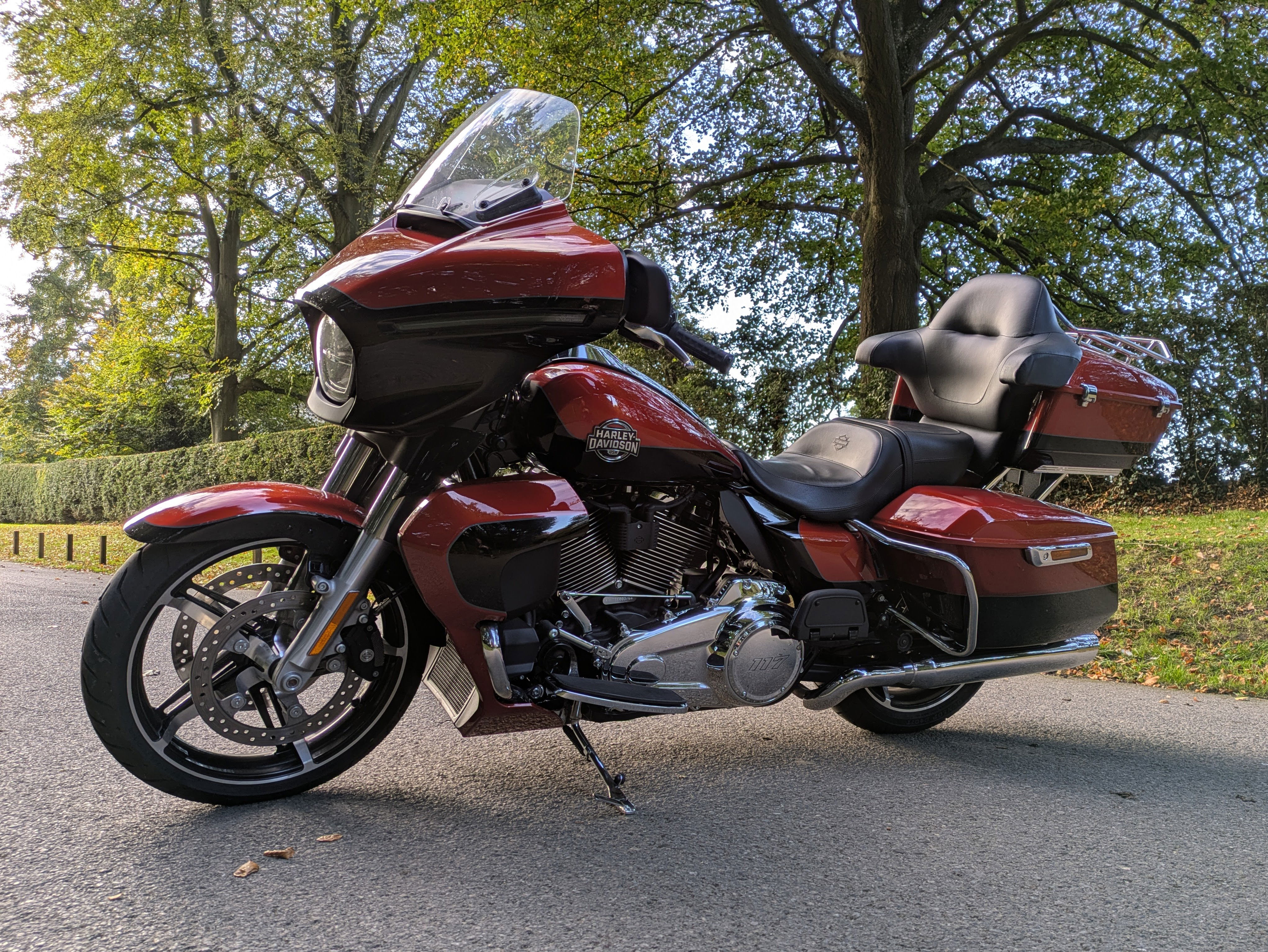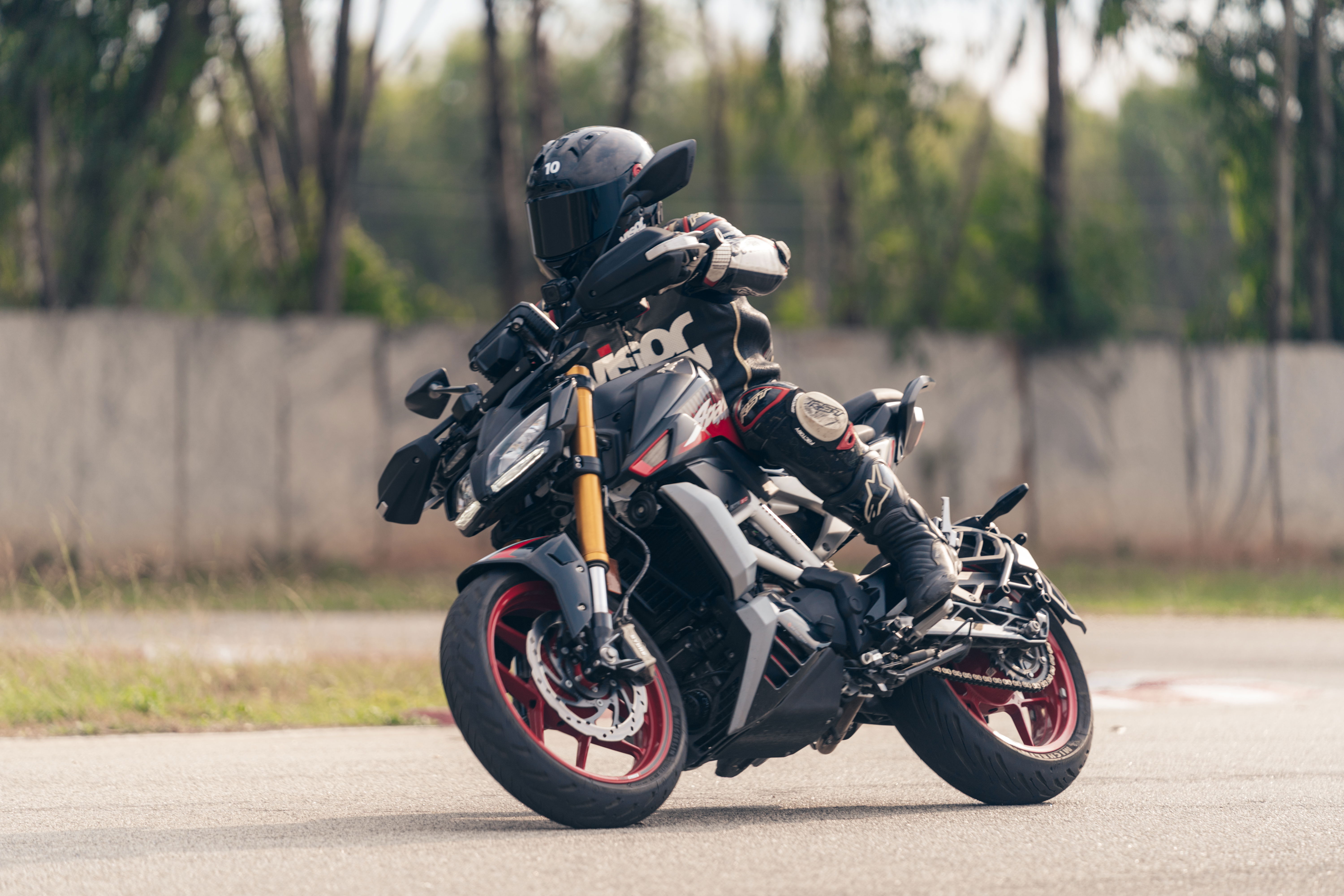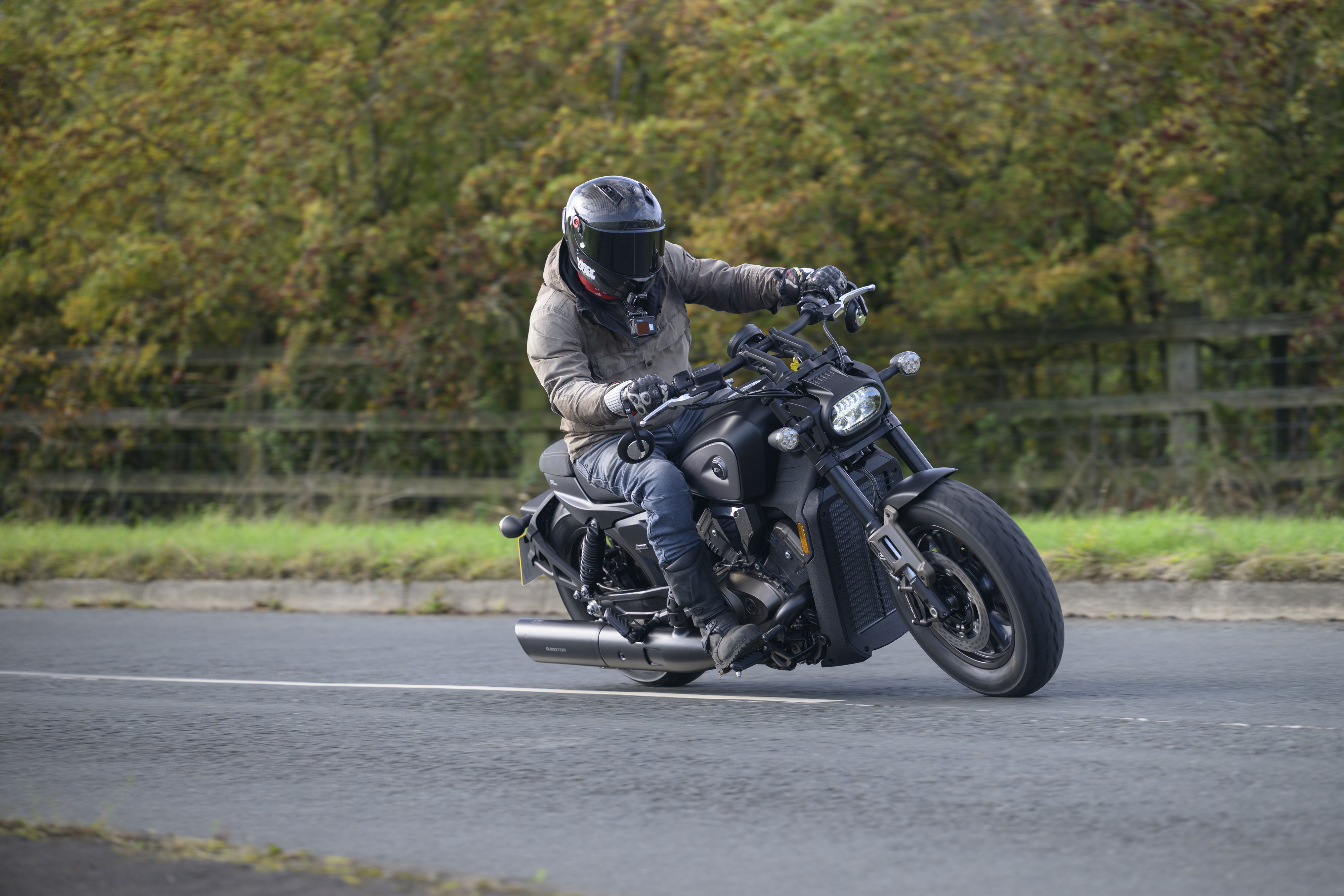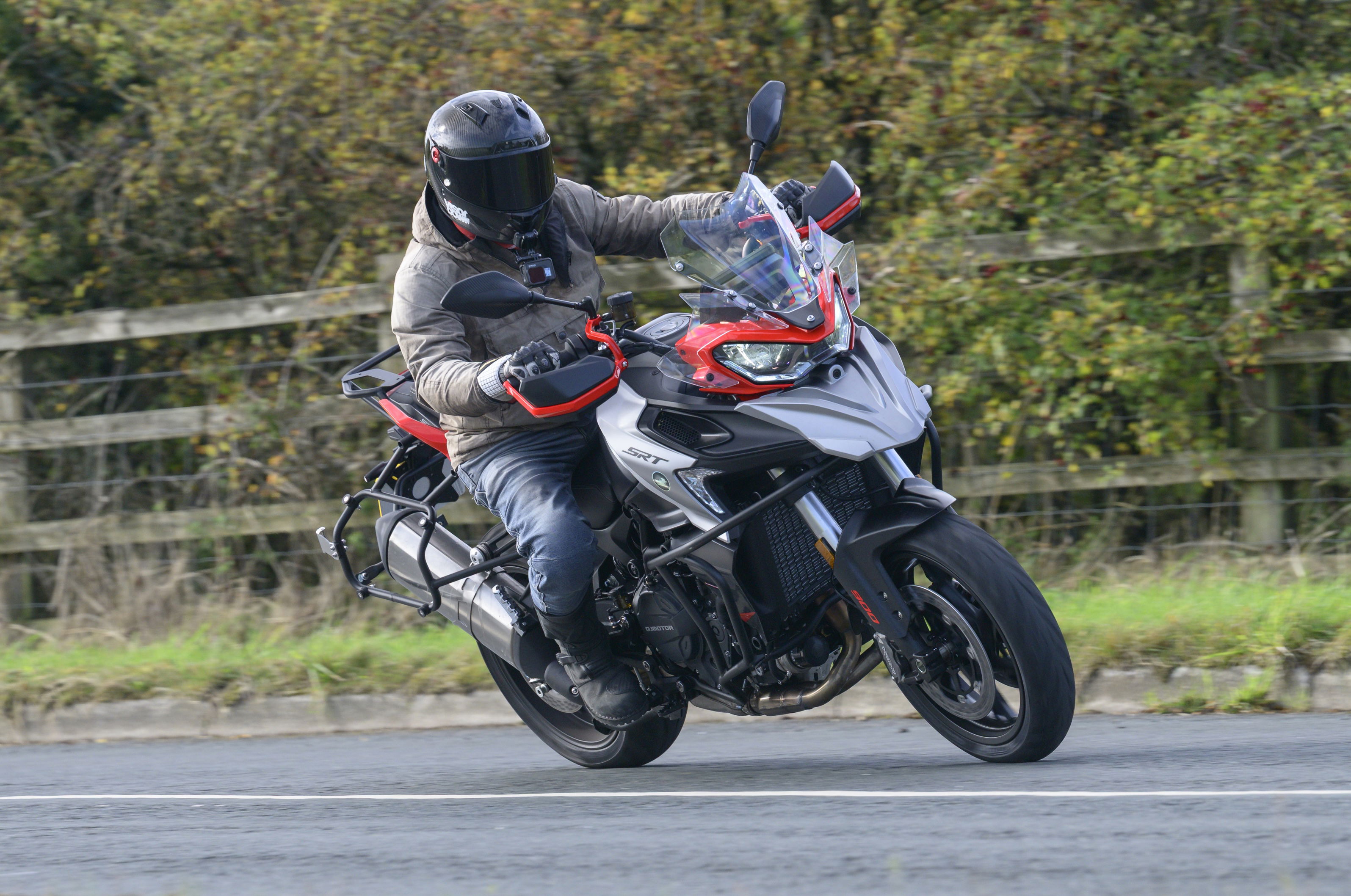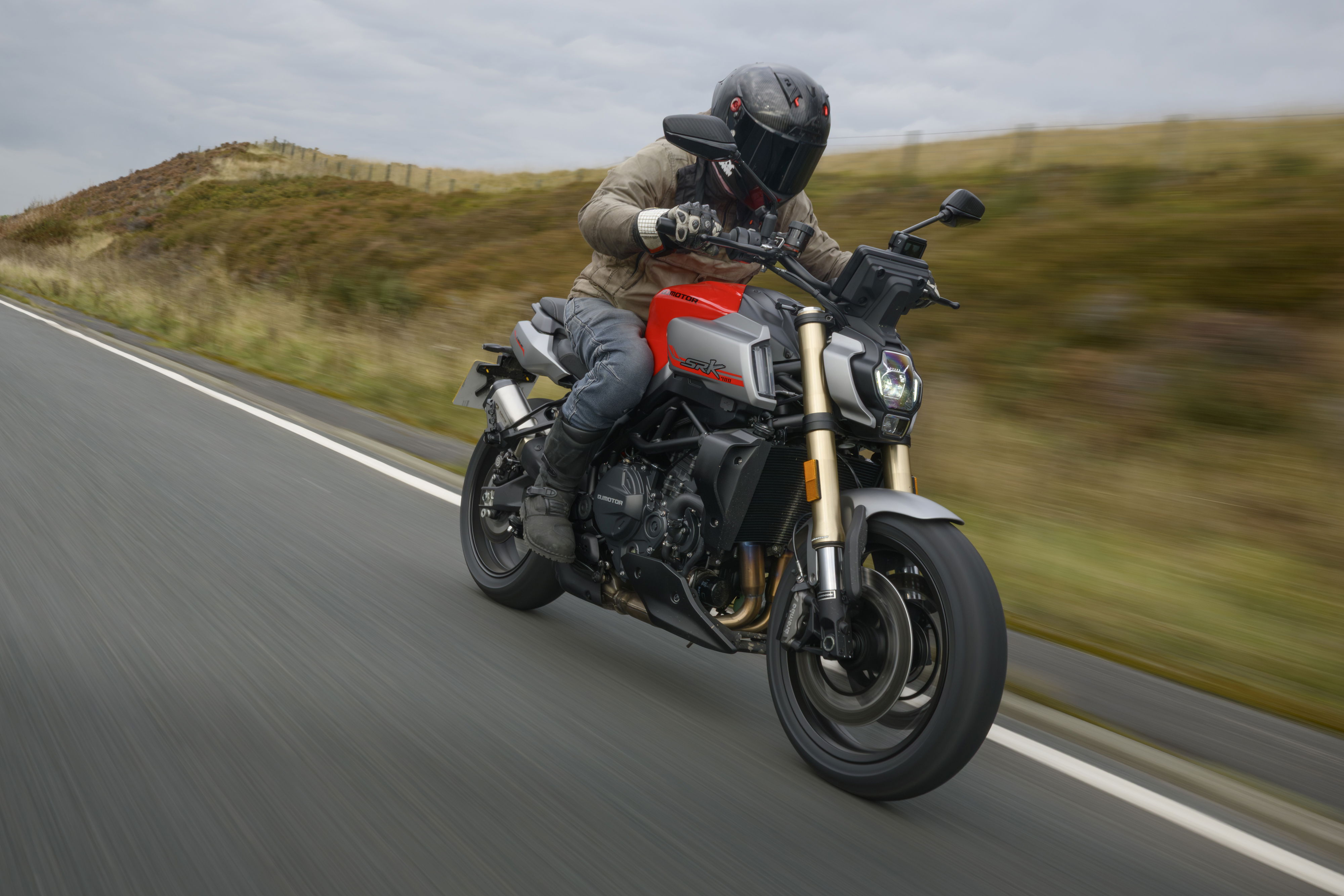MGS-01 Corsa review
The term 'Moto Guzzi sportsbike' is used in schools to teach English students what oxymoron means, along with honest politician, fast BMW and reliable Buell. So assuming the next generation of school leavers can actually read or write, the new MGS-01 is going to confuse them horribly - it is a Moto Guzzi, and after scoring the first ride on a near production ready prototype, I can tell you the sportsbike tag fits perfectly too.

The term 'Moto Guzzi sportsbike' is used in schools to teach English students what oxymoron means, along with honest politician, fast BMW and reliable Buell. So assuming the next generation of school leavers can actually read or write, the new MGS-01 is going to confuse them horribly - it is a Moto Guzzi, and after scoring the first ride on a near production ready prototype, I can tell you the sportsbike tag fits perfectly too.
Don't mistake it for supersport though - the MGS is not aimed at the high tech, high performance V-twins such as the Ducati 999 or the Aprilia RSV Mille. Apart from anything else, that wouldn't make sense, as Aprilia has owned Guzzi for the last two years and the last thing it wants is sales of its own models to be stolen by the company it's invested so much money in. Neither is the MGS aimed directly at old stagers like Ducati's 1000DS (for all its effective revamp this year). Think of it as something in between, a sort of Buell Firebolt with breeding and family.
Its purpose, aside from selling well and making a good return on Aprilia's investment in the famous lakeside factory, is to do something about the association of Guzzi's name with very old blokes with beards. General manager Roberto Brovazzo says he wants Guzzi to become a youthful brand again, a feat which will take real sportsbikes and entry level machines to achieve - neither of which Guzzi has had for years. So the 2003 750 Breva's job is attracting new young riders, while the MGS is designed to pull in a slice of the sportsbike crowd.
It'll do it, too. Although it's not RSV quick, it's still plenty quick enough, at least in the 'Corsa' spec of the late prototype I rode around the Adria circuit near Venice. The power output of 121bhp is fast enough to get exciting without threatening to spit you off in a wall of revs and splintering plastic should your right wrist twitch a degree too far, certainly for riders who don't spend every other week honing their skills on track days. But that's not really the point of the MGS anyway - it's designed to be fun, but it's also designed to be easy to ride, and that means a broad spread of torque, so it punches out of corners whatever revs you've got dialled in (within reason...). Its peak torque figure of 83.2lb.ft is very high, no question, but it occurs at just 6400rpm, well short of the 8000rpm where the power tops out.
That ensures a big spread of thrust at the top half of the rev range, and right down below there's plenty more - more than 60lb.ft at 2900rpm, according to Guzzi. On the prototype this great dollop of grunt was spoiled by a hole in its delivery around the 4000rpm mark, but the engineers were confident this would be removed by the time they'd finished sorting out the engine management mapping. Even if they're only half successful it will still be a mighty fine motor. And that's ignoring the sound it makes, which in practice is impossible. The throaty bellow from the underseat exhaust is harder edged than the usual hollow Guzzi boom but warmer than a Ducati. Of course, fully silenced road models will inevitably sound anaemic in comparison, although the test bike wasn't especially loud.
The engine is based on the old eight-valve Daytona/Centauro unit, but just about every single internal component has been renewed and updated - it's now far revvier and crisper, as well as more powerful, and remarkably smooth too.
Bear in mind that although the Corsa will be released early in 2004, it will only be in restricted numbers primarily destined for competition (Guzzi is eyeing up rule changes in the high profile American AMA series which will allow air-cooled twins up to 1300cc to take part - aimed at Buell but opening the door for Guzzi too). The mainstream model you'll see the most of in showroom will be called the MGS-01 Serie, with a slightly smaller engine and power reduced to 95bhp. The all important torque is likely to be affected less though, and it'll be more affordable than the Corsa's £12,000 price tag.
The frame will be identical, and it's in the chassis that the old Moto Guzzi ways have been changed most dramatically. The RSV Mille has been used to benchmark the MGS, which as a consequence shares its compact 1420mm wheelbase and 50:50 weight distribution. The swingarm is some 100mm longer than Guzzi used to use at 400mm, massively improving rear end behaviour, especially powering out of turns when it grips hard and fires you forward while holding a tight line.
The prototype's front end wasn't behaving perfectly, changing line if you shut the throttle quickly while turning in, but Guzzi's aware of that and is extending the rake from 23.5 to 24 degrees to sort this out. But the integrity of the frame isn't in question - its torsional and lateral stiffness figures are the same as the RSV's, and that has one of the strongest frames of any production bike.
The bike was first seen at last year's Munich motorcycle show, where visitors voted it the best looking machine of the event. So even if you're not seduced by its lean, angular and overtly mechanical looks, there are more than enough who are.
When they get to ride it, they're not going to be disappointed.
EVOLUTION
February 2002 - Italian Guzzi specials builder Ghezzi and Brian is taken on to shape the new design
October 2002 - the first show bike is unveiled and receives the most positive reviews of any new Guzzi in recent history
June 2002 - the Corsa prototype is running well enough for the first press rides
Spring 2004 - MGS-01 Corsa to go on sale, around £12,000
Autumn 2004 - MGS-01 Serie to go on sale, est £7500
RIVALS
Buell XB12R Firebolt - another agile, torquey, air-cooled twin sportsbike. The quirky tech puts off some riders, as does the reliability history, but it rides extremely well
Ducati 1000DS - torquey, lazy motor matched to eighties race replica riding position, an odd mix. But the Ducati name has real kudos
Suzuki SV1000 - not nearly as classy but it's doubtful the SV's bargain price will be threatened by the Guzzi. Japanese build quality behind it too, but also more of an all-rounder.
The term 'Moto Guzzi sportsbike' is used in schools to teach English students what oxymoron means, along with honest politician, fast BMW and reliable Buell. So assuming the next generation of school leavers can actually read or write, the new MGS-01 is going to confuse them horribly - it is a Moto Guzzi, and after scoring the first ride on a near production ready prototype, I can tell you the sportsbike tag fits perfectly too.
Don't mistake it for supersport though - the MGS is not aimed at the high tech, high performance V-twins such as the Ducati 999 or the Aprilia RSV Mille. Apart from anything else, that wouldn't make sense, as Aprilia has owned Guzzi for the last two years and the last thing it wants is sales of its own models to be stolen by the company it's invested so much money in. Neither is the MGS aimed directly at old stagers like Ducati's 1000DS (for all its effective revamp this year). Think of it as something in between, a sort of Buell Firebolt with breeding and family.
Its purpose, aside from selling well and making a good return on Aprilia's investment in the famous lakeside factory, is to do something about the association of Guzzi's name with very old blokes with beards. General manager Roberto Brovazzo says he wants Guzzi to become a youthful brand again, a feat which will take real sportsbikes and entry level machines to achieve - neither of which Guzzi has had for years. So the 2003 750 Breva's job is attracting new young riders, while the MGS is designed to pull in a slice of the sportsbike crowd.
It'll do it, too. Although it's not RSV quick, it's still plenty quick enough, at least in the 'Corsa' spec of the late prototype I rode around the Adria circuit near Venice. The power output of 121bhp is fast enough to get exciting without threatening to spit you off in a wall of revs and splintering plastic should your right wrist twitch a degree too far, certainly for riders who don't spend every other week honing their skills on track days. But that's not really the point of the MGS anyway - it's designed to be fun, but it's also designed to be easy to ride, and that means a broad spread of torque, so it punches out of corners whatever revs you've got dialled in (within reason...). Its peak torque figure of 83.2lb.ft is very high, no question, but it occurs at just 6400rpm, well short of the 8000rpm where the power tops out.
That ensures a big spread of thrust at the top half of the rev range, and right down below there's plenty more - more than 60lb.ft at 2900rpm, according to Guzzi. On the prototype this great dollop of grunt was spoiled by a hole in its delivery around the 4000rpm mark, but the engineers were confident this would be removed by the time they'd finished sorting out the engine management mapping. Even if they're only half successful it will still be a mighty fine motor. And that's ignoring the sound it makes, which in practice is impossible. The throaty bellow from the underseat exhaust is harder edged than the usual hollow Guzzi boom but warmer than a Ducati. Of course, fully silenced road models will inevitably sound anaemic in comparison, although the test bike wasn't especially loud.
The engine is based on the old eight-valve Daytona/Centauro unit, but just about every single internal component has been renewed and updated - it's now far revvier and crisper, as well as more powerful, and remarkably smooth too.
Bear in mind that although the Corsa will be released early in 2004, it will only be in restricted numbers primarily destined for competition (Guzzi is eyeing up rule changes in the high profile American AMA series which will allow air-cooled twins up to 1300cc to take part - aimed at Buell but opening the door for Guzzi too). The mainstream model you'll see the most of in showroom will be called the MGS-01 Serie, with a slightly smaller engine and power reduced to 95bhp. The all important torque is likely to be affected less though, and it'll be more affordable than the Corsa's £12,000 price tag.
The frame will be identical, and it's in the chassis that the old Moto Guzzi ways have been changed most dramatically. The RSV Mille has been used to benchmark the MGS, which as a consequence shares its compact 1420mm wheelbase and 50:50 weight distribution. The swingarm is some 100mm longer than Guzzi used to use at 400mm, massively improving rear end behaviour, especially powering out of turns when it grips hard and fires you forward while holding a tight line.
The prototype's front end wasn't behaving perfectly, changing line if you shut the throttle quickly while turning in, but Guzzi's aware of that and is extending the rake from 23.5 to 24 degrees to sort this out. But the integrity of the frame isn't in question - its torsional and lateral stiffness figures are the same as the RSV's, and that has one of the strongest frames of any production bike.
The bike was first seen at last year's Munich motorcycle show, where visitors voted it the best looking machine of the event. So even if you're not seduced by its lean, angular and overtly mechanical looks, there are more than enough who are.
When they get to ride it, they're not going to be disappointed.
EVOLUTION
February 2002 - Italian Guzzi specials builder Ghezzi and Brian is taken on to shape the new design
October 2002 - the first show bike is unveiled and receives the most positive reviews of any new Guzzi in recent history
June 2002 - the Corsa prototype is running well enough for the first press rides
Spring 2004 - MGS-01 Corsa to go on sale, around £12,000
Autumn 2004 - MGS-01 Serie to go on sale, est £7500
RIVALS
Buell XB12R Firebolt - another agile, torquey, air-cooled twin sportsbike. The quirky tech puts off some riders, as does the reliability history, but it rides extremely well
Ducati 1000DS - torquey, lazy motor matched to eighties race replica riding position, an odd mix. But the Ducati name has real kudos
Suzuki SV1000 - not nearly as classy but it's doubtful the SV's bargain price will be threatened by the Guzzi. Japanese build quality behind it too, but also more of an all-rounder.
